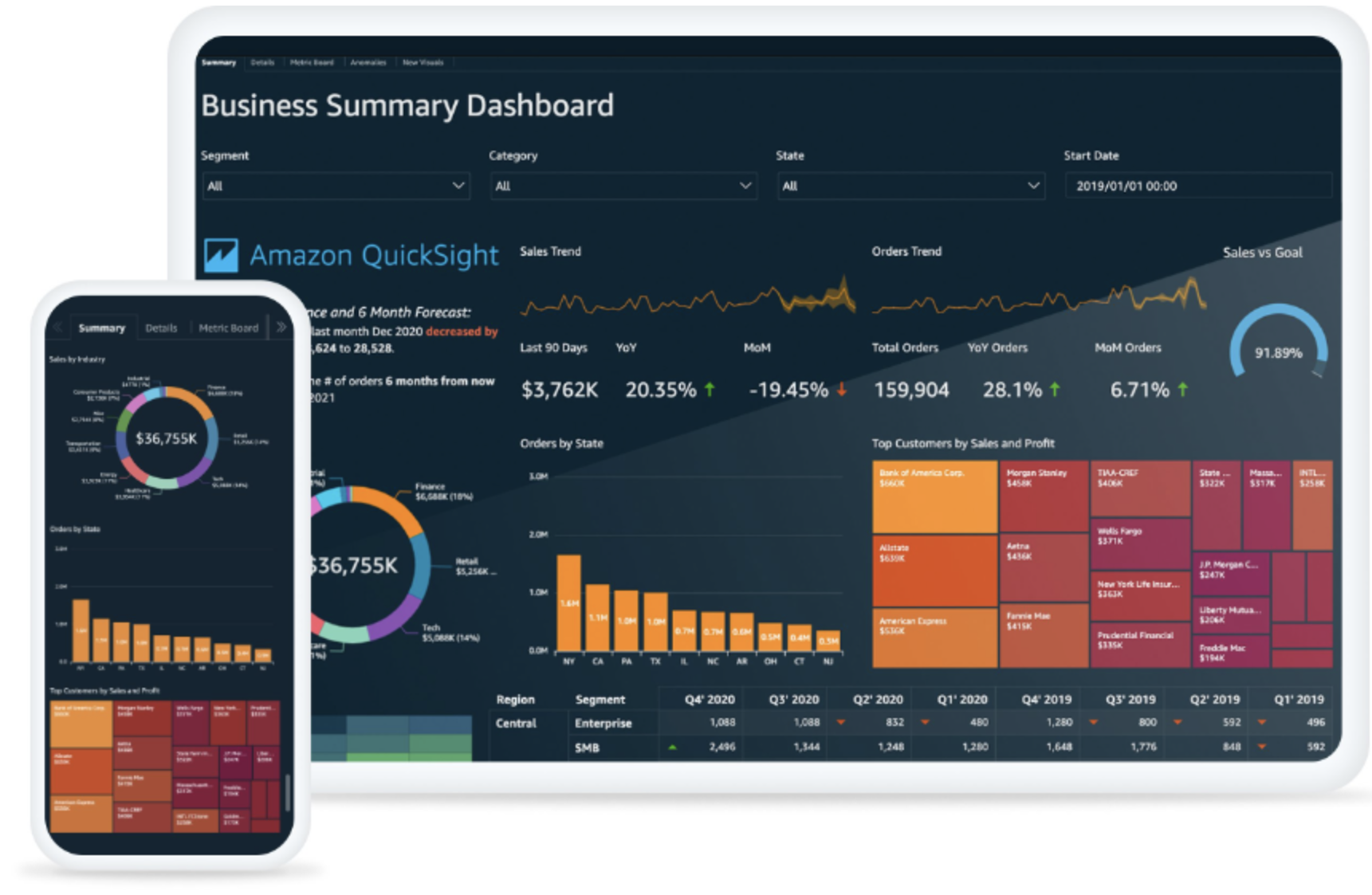Amazon QuickSight is AWS’s cloud business intelligence service. It features native AWS integration, the SPICE in-memory calculation engine for fast queries on large datasets, industry-first usage-based pricing, and AI powered analytics such as natural language queries, anomaly detection, and predictive insights. It is one of the most successful business application AWS has ever built.
The Set Up
When I joined AWS in 2016 QuickSight had been in development for two years and was in a delayed private preview following its announcement at re:Invent in 2015. Although the product was still rudimentary in its feature set, there was tremendous pressure to launch within the year.
The immediate challenge was to deliver a credible launch on an aggressive timeline while simultaneously setting a new strategic direction that aligned the product strategy with AWS’s strengths, guiding the service toward product-market fit and building a foundation for sustainable growth.
My Role
Title: Product Leader
Responsibilities: As Product Leader, I worked closely with other product managers, engineering, leadership, and marketing to refine QuickSight’s vision, prioritize the roadmap, and define the go-to-market strategy. My responsibilities spanned pricing and packaging, cross-functional alignment, and the creation of the product marketing and sales enablement approach. I also participated in operational planning and customer engagement efforts, ensuring the product’s strategy, execution, and market delivery were fully connected from concept through adoption.
The Work
The original product strategy was targeted towards self-serve business users, who would sign up for the product on their own. After I joined, we found that AWS lacked brand recognition and customer acquisition expertise with that audience prompting us to reposition QuickSight towards AWS’s existing developer and enterprise customer base. This aligned the platform with AWS’s strengths (scalability, ease of deployment, speed, and cost efficiency). Building on these pillars, we reoriented the roadmap leading to an significantly better product market fit.
Initial Launch: Built the complete launch motion including website, demos, tutorials, webinars, and re:Invent sessions, while delivering critical feature improvements.
Strategy: Re-focused the product toward enterprise deployments and embedded analytics for developers, aligning with AWS’s core customers and leverage points: cost, scalability, security, and cloud-native infrastructure.
Roadmap Delivered:
Analytic Capabilities: 10 new visualizations, advanced filtering, alerting, pixel-perfect reporting, and AI analytics features (natural language queries, automated insights, predictive analytics, anomaly detection) that later became known as Q.
Deployment: User management, role-based security, Active Directory integration, row/column-level data security, and embedding SDK.
SPICE / Data Integrations: 15 new data connectors (including Snowflake, Athena, Teradata, Databricks, BigQuery, and Adobe Analytics); increased SPICE capacity to 1B rows or 1TB per dataset.
Go-to-Market: Created all marketing and enablement assets (blogs, campaigns, onboarding, sales training) without a dedicated marketing team.
Internal Adoption: Directed an Amazon-wide rollout of QuickSight, replacing legacy BI tools, generating millions in cost savings, and creating case studies for external customers.
Pricing Innovation: Introduced the BI industry’s first usage-based pricing model (charging per-user for authors and per-session for viewers) dramatically reducing cost barriers for large-scale deployments.
Sales Enablement: Built the case for, and piloted, AWS’s first overlay sales team dedicated to QuickSight, which significantly accelerated adoption and revenue growth.
The Results
Adoption: Generated tens of thousands of AWS customer signups at launch; later became widely used across AWS’s enterprise and developer customer base.
Internal Success: QuickSight was deployed across Amazon, replacing legacy BI tools and generating millions in savings.
Revenue Growth: The combination of usage-based pricing and a dedicated sales overlay team unlocked scalable customer expansion, driving triple-digit annual growth during my tenure and beyond.
Differentiation: Embedding capabilities, elastic pricing, and ML-powered analytics (Amazon Q) positioned QuickSight as a unique player in the BI market.
Organizational Impact: Established GTM discipline and created a new sales motion within AWS, setting the product on a sustainable long-term trajectory.
Looking Back
Joining Amazon was an opportunity to experience product building at global scale. QuickSight was the first product I inherited rather than created, and my mandate was to guide it toward product-market fit and sustainable growth within one of the most complex organizations in the world. As a new service in the expansive AWS portfolio, QuickSight had to earn its place, requiring our team to operate like entrepreneurs inside a global enterprise, moving fast, thinking creatively, and proving value through results.
The experience was a masterclass in collaboration and leadership. I worked not only across engineering, design, and product within QuickSight but also with dozens of other AWS services (data, compute, security, and AI/ML) to power our capabilities. Beyond that, I partnered with global sales, marketing, and solutions architect teams to build GTM and customer success programs, while leading an internal adoption initiative that connected me with teams across nearly every part of Amazon.
Regular interaction with AWS’s senior leadership provided a firsthand education in how one of the world’s most effective organizations achieves alignment, scale, and operational precision. The experience fundamentally shaped how I think about influence, collaboration, and driving innovation inside large, interconnected systems.
QuickSight 2016 Pre-Launch (Before)
QuickSight 2019 (After)
“With scenarios from Amazon Q in QuickSight, powerful AI helps us achieve our objectives in minutes, empowering employees on the front lines to understand root causes of metric movements. Scenarios helps reinvent our approach to business analysis, accelerating our ability to respond to changes in our business.”



